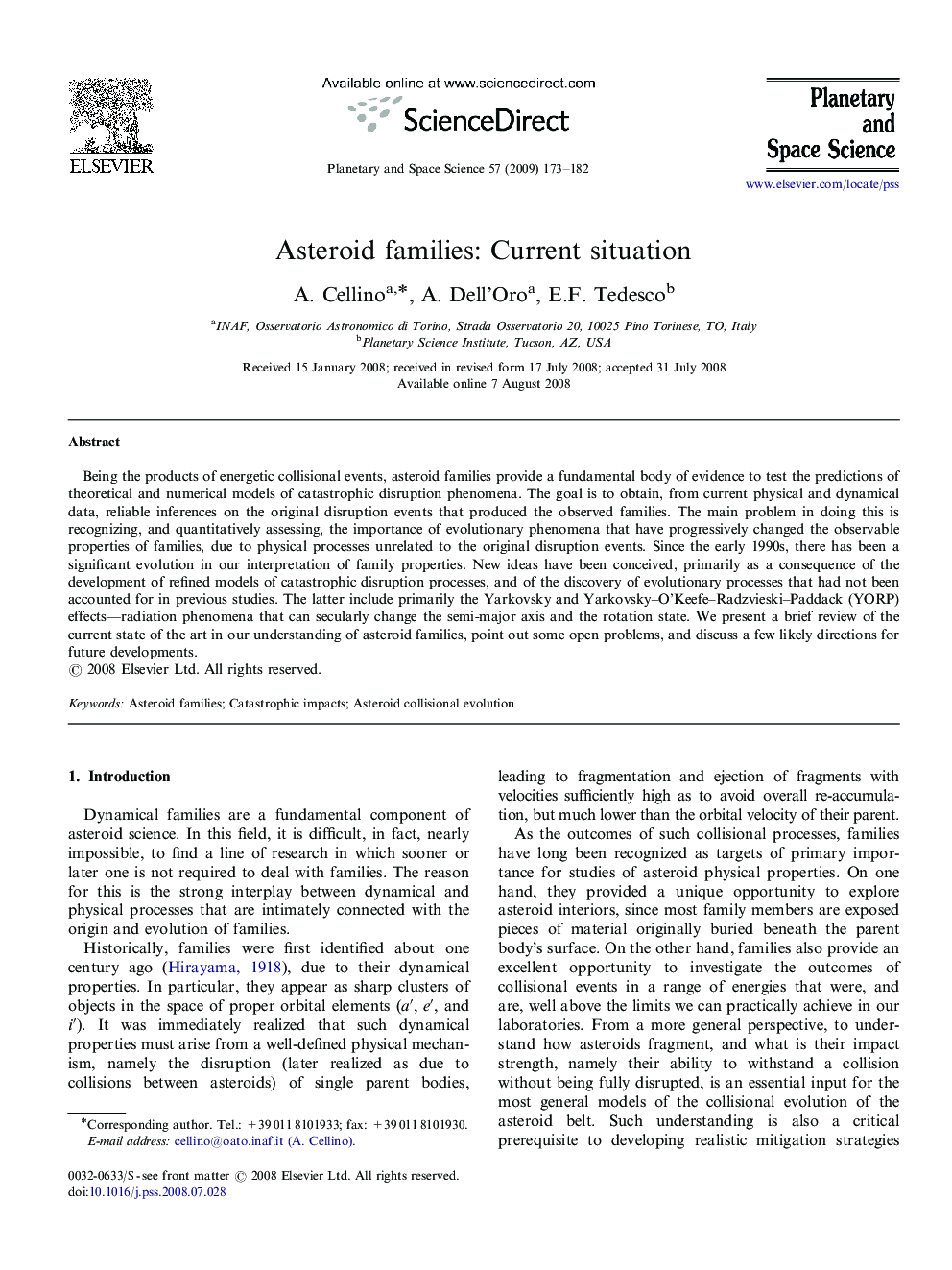| Article ID | Journal | Published Year | Pages | File Type |
|---|---|---|---|---|
| 1782417 | Planetary and Space Science | 2009 | 10 Pages |
Abstract
Being the products of energetic collisional events, asteroid families provide a fundamental body of evidence to test the predictions of theoretical and numerical models of catastrophic disruption phenomena. The goal is to obtain, from current physical and dynamical data, reliable inferences on the original disruption events that produced the observed families. The main problem in doing this is recognizing, and quantitatively assessing, the importance of evolutionary phenomena that have progressively changed the observable properties of families, due to physical processes unrelated to the original disruption events. Since the early 1990s, there has been a significant evolution in our interpretation of family properties. New ideas have been conceived, primarily as a consequence of the development of refined models of catastrophic disruption processes, and of the discovery of evolutionary processes that had not been accounted for in previous studies. The latter include primarily the Yarkovsky and Yarkovsky-O'Keefe-Radzvieski-Paddack (YORP) effects-radiation phenomena that can secularly change the semi-major axis and the rotation state. We present a brief review of the current state of the art in our understanding of asteroid families, point out some open problems, and discuss a few likely directions for future developments.
Keywords
Related Topics
Physical Sciences and Engineering
Earth and Planetary Sciences
Geophysics
Authors
A. Cellino, A. Dell'Oro, E.F. Tedesco,
